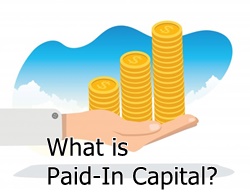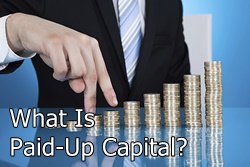What is Paid-In Capital?
Paid-in Capital is the capital amount that is paid in by investors during preferred or common stock issuances, along with the par value of shares and the amount that is more than the Par value.

Basically, paid-in capital signifies the funds that businesses raise by selling the equity. It also refers to the line item on the Balance Sheet listed under the equity of stockholders, shown along with the additional paid-in capital’s line.
Explaining Paid-In Capital
Paid-in capital, for common stock, is also known as the contributed capital that comprises the par value of the stock along with any amount that is paid extra than the par value. On the contrasting side, additional paid-in capital is only the amount of capital that is extra than the premium paid or the par value.
Sometimes, preferred shares have par values that are more than the marginal. However, most common shares, in the present time, comes with a par value of nothing more than pennies. Owing to this, additional paid-in capital demonstrates the total paid-in capital figure and is often shown by itself on the firm’s balance sheet.
Also, additional paid-in capital can offer a substantial part of the firm’s capital before the reserved Earnings start amassing via several years of profit. Moreover, it is even regarded as an essential capital defence layer against possible business losses once reserved earnings have signalled a deficit.
Paid-in Capital from the Treasury Stock Sale
Companies might buy back shares and return some of the capital to shareholders periodically. The shares purchased back get listed within the equity section of the shareholders at their price of repurchase as treasury stock, which is a contra-equity account that decreases the total balance of the equity of shareholders.
In case the treasury stock gets sold at above the repurchase price, the profit gets credit to the account known as paid-in capital from treasury stock. However, in a reverse situation, the loss decreases the retained earnings of the company.
Talk to our investment specialist
Also, in case the treasury stock gets sold at an equal price as that of its repurchase price, the treasury stock removal will restore the equity of shareholders to its pre-buyback level.
All efforts have been made to ensure the information provided here is accurate. However, no guarantees are made regarding correctness of data. Please verify with scheme information document before making any investment.












